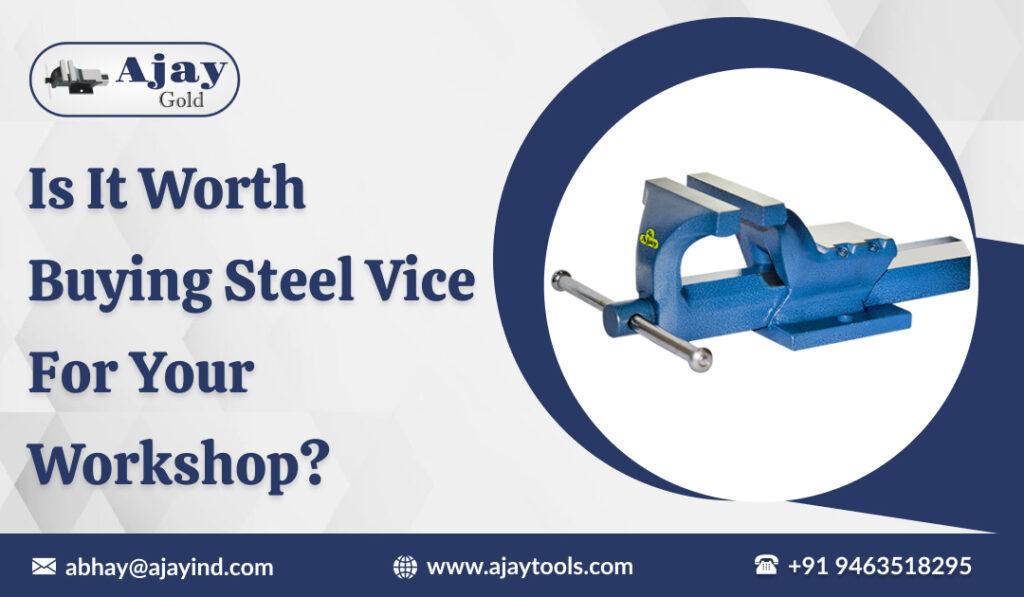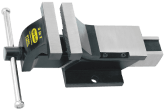A bench vice is an important tool that is most probably present in workshops for woodworking, metalworking, and other manufacturing applications. Different types of vices are available on the market. Usually, different type of material is used to manufacture the vise. The most commonly used vice is steel vice, but it depends on the application what vise should be used. Thus, you can choose vise quality as per your application. Using a bench vise, you can perform various tasks, such as drilling and sawing with ease as the worker can use both hands to perform the required task without holding a vise. In today’s blog, we’ll discuss why you should have a bench vice in your workshop. Let’s get started:
What is Steel Vice Used for?
In a workshop, it is important to have a tool that can be used to hold the object so that various tasks can be performed on the object. When it comes to holding devices, the name that comes into mind is a bench vise. If you are working in a workshop where drilling, milling, or sawing operations are performed on the object, and you want a tool to hold the object, then you must have a bench vise in your workshop.
Steel is an alloy of carbon and iron used in manufacturing because of its high corrosion resistance and tensile strength. The handle, jaw surfaces, and screw of a vice all are made of hardened steel. Here, the term ‘hardened steel’ means that it contains medium to high carbon material. In addition to this, it has been manufactured while giving heat treatments of tempering and quenching.
Quenching is referred to as the instant cooling of steel that makes the vice durable. This process is followed by tempering which is a heat process that maximizes the metal’s strength. The whole process makes the handle, screw, and jaws of steel bench vise strong and durable.
What Material of a Bench Vise You Should Choose?
The vise you should choose will depend on the application or work type that needs to be done. For example, you should buy a grey iron bench vise to complete the tasks such as cutting, hammering or filing where vibration is involved when you perform a specific task on the object. On the other hand, if you are working with wider workpieces that will extend or widen the vices to their limit, then you should buy a steel vice because of its high tensile strength as there will be less risk of breakage.
Parts of Steel Bench Vice
- Sliding Jaw: As the name implies, the sliding jaw is used to open and close the jaw to secure the object according to the size of the object.
- Fixed Jaw: As the name suggests, the fixed jaw doesn’t move as it remains static during operation.
- Handle: It is located at the front of the steel vise and it acts as a lever that helps in turning the main screw. As a result, it moves the sliding or dynamic jaw.
- Main Screw: It is the lead screw that is used to rotate and move the sliding jaw. It is attached to the handle and goes through the nut.
Things to Consider When Using a Steel Bench Vise
Mostly, vises are used for various applications. Therefore, it is important to choose the appropriate vise based on its application. Here is what you need to consider when using a bench vise:
- Before start working, make sure the vise is securely attached to the workbench. Additionally, ensure to check the worktable is securely attached to its base to prevent damage.
- Don’t work with cracked or damaged heavy-duty bench vise because it can cause damage.
- Keep the moving parts of the vise lubricated and free from damage.
- While using it, make sure to cover your face with a shield and your eyes with goggles.
Conclusion
Now, you’ve attained the knowledge of steel vice uses, and how to use it effectively along with its different parts. If you want to buy different types of vises for your workshop, you can also contact Ajay Tools that is a leading manufacturer and exporter of a bench vice.


